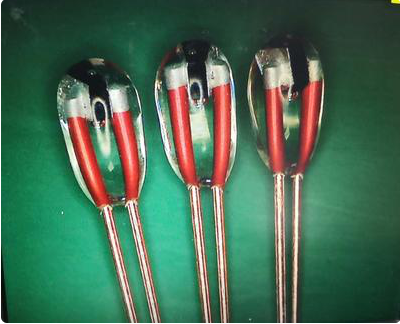What is a Glass Head NTC Thermistor?
A Glass Head NTC Thermistor is a kind of temperature sensor that measures temperature changes using a Negative Temperature Coefficient (NTC) thermistor. The resistance of the thermistor, a resistor, drops as temperature rises. The thermistor measures this variation in resistance and calculates the temperature.
What Benefits Can a Glass Head NTC Thermistor Offer?
Accuracy is one of the key benefits of a Glass Head NTC Thermistor. Glass Head NTC Thermistors provide a high degree of precision and accuracy for measuring temperature changes. They are also very sensitive and fast to pick up temperature changes.
The tough design of a Glass Head NTC Thermistor is another benefit. High temperatures and challenging situations are intended to be withstood by the Glass Head NTC Thermistor. It is a great option for industrial applications since it is also shock- and vibration-resistant.
Glass Head NTC Thermistors: Where Are They Used?
Numerous applications call for the usage of Glass Head NTC Thermistors, including:
- HVAC units
- medical supplies
- vehicle applications
- commercial controls
- electronic devices
NTC Glass Head Thermistors are often employed in temperature compensation circuits, which are used to keep electronic equipment at a constant temperature.
The Best Glass Head NTC Thermistor for Your Application: How to Choose
For your application, choosing the ideal Glass Head NTC Thermistor requires careful consideration of a number of criteria. These elements consist of:
- The range of temperatures your application requires
- The precision necessary for your application
- The amount of time your application must respond
- The thermistor's dimensions and form
- The thermistor's container
The operating environment of your application must also be taken into account since it will affect the thermistor's performance.
Working with a knowledgeable Glass Head NTC Thermistors provider that can advise you on choosing the best thermistor for your application is generally advised.
Why Pick Us for Your Needs in Glass Head NTC Thermistor?
Including Glass Head NTC Thermistors, we at Holre have been designing and producing temperature sensors for over 15 years. We have a history of delivering top-notch goods and first-rate customer support.
Our Glass Head NTC Thermistors are made to the highest standards of design and production, guaranteeing precision, dependability, and longevity. To fulfill the demands of your application, we provide a broad variety of sizes and packaging choices. If necessary, we can even provide bespoke solutions.
We provide high-quality goods as well as knowledgeable technical assistance to assist you in choosing the best thermistor for your application. Advice on the selection and incorporation of our products into your application may be obtained from our team of skilled engineers.
The Glass Head NTC Thermistor is a great option for applications that need precise and dependable temperature sensing, to sum up. The Glass Head NTC Thermistor is perfect for usage in a variety of industrial, automotive, medical, and consumer electronics applications because to its excellent accuracy, sensitivity, and tough construction.
For further information, please get in touch with Holre if you need a high-quality Glass Head NTC Thermistor for your application. To assist you with choosing the ideal thermistor, our team of professionals is available now.
What is an glass head NTC thermistor?
NTC stands for "Negative Temperature Coefficient". NTC thermistors are resistors with a negative temperature coefficient, which means that the resistance decreases as the temperature increases. They are mainly used as resistance temperature sensors and current-limiting devices. The temperature sensitivity coefficient is approximately five times that of silicon temperature sensors (silicon oxide) and ten times that of resistance temperature detectors (RTDs). NTC sensors are typically used in the range of -55°C to 200°C.Definition of NTC thermistor
An NTC thermistor is a thermistor that exhibits a large, precise, and predictable decrease in resistance as the core temperature of the resistor increases over the operating temperature range.Characteristics of cig NTC thermistor
Unlike RTDs (resistance temperature detectors) which are made of metal, NTC thermistors are usually made of ceramics or polymers. The different materials used result in different temperature responses and other properties.Temperature response
While most NTC thermistors are generally suitable for use in the temperature range of -55°C to 200°C, and they provide the most accurate readings, there are special NTC thermistors available for temperatures close to absolute zero (- 273.15) °C) and products specially designed for use above 150 °C.The temperature sensitivity of an NTC sensor is expressed as "percent change per degree Celsius". Typical values for temperature sensitivity range from -3% to -6% per °C, depending on the specifics of the material used and the production process.
Comparison with other temperature sensors
Compared to RTDs, NTCs have a smaller size, faster response, stronger shock and vibration resistance, and lower cost. They are slightly less accurate than RTDs.Compared to thermocouples, the accuracy of both is similar; however, thermocouples can withstand very high temperatures (around 600°C) and are used for this application, where they are sometimes referred to as pyrometers. But NTC thermistors offer higher sensitivity, stability, and accuracy than thermocouples at lower temperatures, and useless additional circuitry, so the overall cost is lower. The cost is further reduced as NTCs do not require the signal conditioning circuits (amplifiers, level shifters, etc.) that are often required when dealing with RTDs.







